Vivisecting and Animal Experimentation
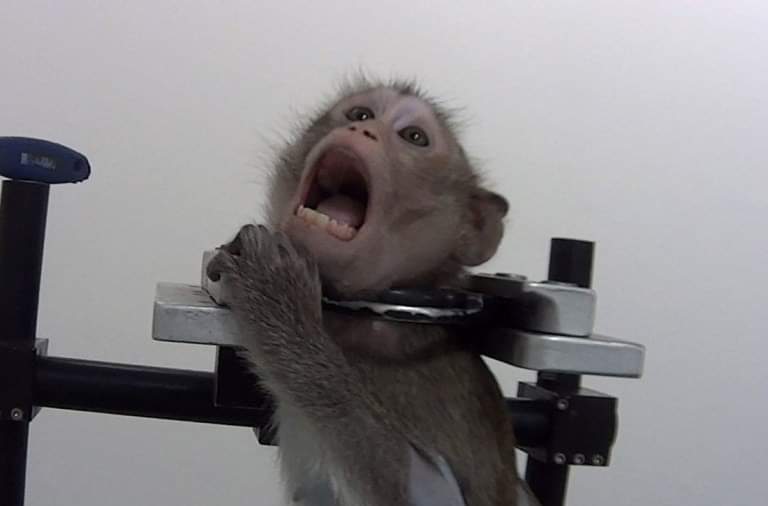
Ga-Maleven
Vivisection: The practice of performing operations on live animals for the purpose of experimentation or scientific research
Vivisecting has been around for centuries, but has gotten more widespread and cruel in the last couple of centuries. With the progression into modern science, medicine, and experimentation, the need to learn new things in order to ever progress is important. But at what cost must these experiments must be performed and are they actually helping at this point?
While performing non-lethal and non-painful tests are practiced often, yield informative results, and are morally right, vivisecting is anything but. With vivisecting animals are routinely cut open, receive head injuries, suffocated, locked away, deprived of food, oxygen, and water, taken away from their mothers, electrocuted, and have other inhumane practices performed on them. Most of these studies aren’t even relevant to medicine, but rather testing cosmetics, unnecessary repeated experiments, and attaching mechanics to the brain.
The animals used for these experiments are most often mice, rats, monkeys, and beagles, but cats, chimps, rabbits, guinea pigs, baboons, and pigs are also used. These animals are bred for the sole purpose of being experimented on, while some are bought, taken from shelters, or in a few cases stolen. Animals of other species may also be subjected to testing, from horses, bovines, and anything else that was acquired.
There is no need to perform half of the experiments that are being tested. No one is going to pump shampoo into their eyes, and repeatedly forcing rabbits to eat deodorant will always get the same results of an upset belly. In fact, most tests performed on animals when transitioned to humans have resulted in failure. Non-human animals are very similar to humans, yes, we are animals and more specifically mammals, but the small differences between species can greatly alter results. Testing with cells has actually given scientists better results than testing on a small mouse then moving to a large human. There have been over 2,000 tests that were “perfected” on non-human animals but when transitioned to humans failed.
“1. Smoking was thought non-carcinogenic because smoking-related cancer is difficult to reproduce in lab animals. Many continued to smoke and to die from cancer.
2. Benzene was not withdrawn from use as an industrial chemical despite clinical and epidemological evidence that exposure caused leukemia in humans, because manufacturer-supported tests failed to reproduce leukemia in mice.
3. Animal experiments on rats, hamsters, guinea pigs, mice, monkeys, and baboons revealed no link between glass fibers and cancer. Not until 1991, due to human studies, did OSHA label it carcinogenic.
4. Though arsenic was a known human carcinogen for decades, scientists still found little evidence in animals to support the conclusion as late as 1977. This was the accepted view until it was produced in lab animals.
5. Many continued to be exposed to asbestos and die because scientists could not reproduce the cancer in lab animals.
6. Pacemakers and heart valves were delayed in development because of physiological differences between animals they were designed on and humans.
7. Animal models of heart disease failed to show that a high cholesterol/high fat diet increases the risk of coronary artery disease. Instead of changing their eating habits to prevent the disease, people continued their lifestyles with a false sense of security.
8. Patients received medications that were harmful and/or ineffective due to animal models of stroke.
9. Animal studies predicted that beta-blockers would not lower blood pressure. This withheld their development. Even animal experimenters admitted the failure of animal models of hypertension in this regard, but in the meantime, there were thousands more stroke victims.
10. Surgeons thought they had perfected radial keratotomy, surgery performed to enable better vision without glasses, on rabbits, but the procedure blinded the first human patients. The rabbit cornea is able to regenerate on the underside, whereas the human cornea can only regenerate on the surface. Surgery is now performed only on the surface.”
Here are more.
While some tests may have worked out without complete failures, we are at the point that alternatives that give better information are available. And given how few experiments involving vivisecting are even linked to medicine, and how many of the medical ones can easily be transferred to cells, models, etc. it is redundant to keep vivisecting going.
“The facts …
Top cosmetics manufacturer, France is also the one where the largest number of laboratory animals are used for testing.
But what exactly are these tests?
Their goal is obviously not whether makeup is pretty, if a cream feels good or provides a good face mask. It is primarily to verify that a product is not dangerous, not irritating, sensitive, if it has harmful side effects, etc.. To test this, you can imagine, it must push some limits!
The animals used are the same as the ones we welcome in our homes: cats, dogs, rodents and also monkeys …
The tests performed on these animals are chilling:
LD50: consists in determining the lethal ingestion dose of a product. This one is administered to a group of animals until a certain dose kills 50% ,sometimes after a long agony. The survivors are in any case also killed for autopsy.
Draize test: most often performed on rabbits, this test is to measure the ocular irritability of a product. It is administered to a rabbit’s eye and we study the evolution of the deterioration of the area. Another part of this test looks for skin irritability: rodents are shaved on their back and part of the products are being applied to them, often causing serious injury.
Photosensitivity test: once again deprived of their hair, animal product shall be applied and then exposed under a lamp to burn. These tests are often used for the chemical components of sunscreens.
Horrible living conditions
As the animals are there to serve as guinea pigs and not to be pampered, well-being is not really the priority, if not completely ignored: metal cages, lack of hygiene, no emotional marks of affection, and tests until death. The animals become either crazy or totally absent. Dogs most commonly used in the tests are Beagles, who need to live in community. Yet they are often isolated in tiny cages, never getting fresh air.
Alternatives
More and more methods are developed to replace these tests. In addition to ethical and less expensive tests that do not make use of animals, in addition to the significant advantage of being more reliable. Indeed, they are directly designed to match the human body, unlike animals who may not have the same reactions as us.
What is the law?
First, the law has never required testing on animals. Thus they are always on the brands own initiative!
In 2003, the EU decided to ban some of the tests on animals, with an application from March 11, 2009. This prohibition only applies to safety testing (irritation, corrosion, acute toxicity, etc..), But not those on long-term effects (photo-allergy, skin sensitivity, repeated dose toxicity …) which will be prohibited as from 11 March 2013. These prohibitions are to be respected, whether or not of alternative methods and do not concern, however, they only concern European Union brands.
The fight against tests
In France, the association One Voice has been present since the 90’s “for a global and animal ethics..” Its conducted an investigation in 2000 in French laboratories, which helped reveal the open atrocious practices on animals.
You will also find on their site the list of brands labeled One Voice, which does test neither the ingredients nor the finished products on animals.
http://label.one-voice.fr/
Let’s act in choosing products not tested on animals, thank you for them …” – Excerpt from One Voice.
Dissecting for the means of educating children not only is cruel for it causes unnecessary death and pain to an animal, but with models, pictures, and even video children in school do not need to partake in dissections. Most students will never go into a career where that “hands on” experience is required. And for university students learning to be veterinarians or doctors only then would actual corpses would be needed once realistic models can no longer fulfill the role. But the animals used need to come from animals who died of natural causes or needed to be euthanized due to disease, etc. Human cadavers are always from those who gave permission for their bodies to be used so after death. Why must non-human animals be cruelly killed when humans never were for this purpose? Everyday non-human animals die of natural causes, so it really isn’t difficult to obtain bodies. In fact, India has banned dissecting unless for medical purposes due to it simply not being necessary for young people to be looking at a corpse when models work just as well.
Plenty of cruelty products exist on the market that can easily be purchased. A simple way to tell if a product truly was never tested is to look for a symbol of a rabbit next to the words “Not Tested on Animals.” A link below provides lists of cruelty free products. On top of that, cruelty free products tend to also be organic and natural, causing less harm to your body since many chemicals can cause skin irritation and more pain if it gets in your eye.
Vivisecting simply no longer has a need in modern society. And if a living being is so absolutely needed for experimentation, there are more than enough pedophiles in prison. They would provide better results as well since they are human and the differences of species won’t affect results.
Some Facts:
– Projects that utilize animals for laboratory research require absolutely compelling justification in terms of clinical relevance to treatment of humans.” – Robert Hoffman, M.D., neurologist.
– Cancer tumors found in non-human animals are of a completely different nature from those found in humans.” – Dr. Edward Sharpe, research chemist.
– “It has been demonstrated that results from animal research are in NO WAY applicable to humans.” – Gianni Tamino, Italy’s principle medical school.
– “Practice surgery on animals was outlawed years ago in England which STILL produces some of the world’s finest surgeons (pcrm.org).
– 85% of NATO nations DO NOT use animals. (pcrm.org)
– Because of early vivisection, knowledge of the anatomy of human beings and many medical practices used on humans were incorrect for almost 1,400 years. (pcrm.org)
– “It is NEVER possible to extrapolate animal findings to humans with confidence.” – Kenneth Stoller, M.D.
– “The very nature of animal experimentation adds unknown variables that lead to misleading research results.” – Dr. Aysha Akhtar, M.D., M.P.H., neurologist and public health specialist.
–: “Conclusions drawn from animal research, when applied to human beings are likely to delay progress, mislead and do harm to the patient. Vivisection should be abolished.” – Dr. Moneion Fadali, M.D., American Board of Surgery.
– “While conflicting animal results have delayed and hampered advances in the war on cancer, they have NEVER produced a single substantial advance in either the prevention or treatment of human cancer.” – Dr. Irwin Bross, former director of Roswell Park Memorial Institute for Cancer Research in Evidence to US Congress, 1991.
– The National Institute of Health made a decision to end experiments on chimpanzees. It is time to realize that the same considerations apply even to the smallest animals such as mice and rats. (pcrm.org)
– “Traditional animal testing is expensive, time consuming, uses a lot of animals, and from a scientific perspective the results do not translate to humans.” – Dr. Christopher P. Austin, Director of the National Institutes of Health Chemical Genomics Center.
– “Mice are mice, and people are people. If we look to the mouse to model every aspect of the disease for man and to model cures, we’re just wasting our time. ” – Dr. Cliff Barry, Chief Tuberculosis Research Section, National Institute of Allergy and Infectious Disease.
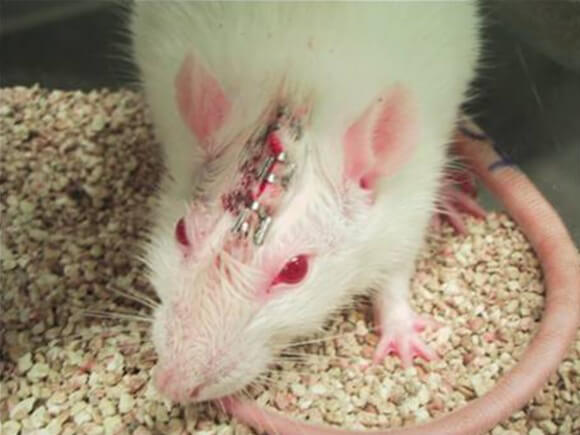
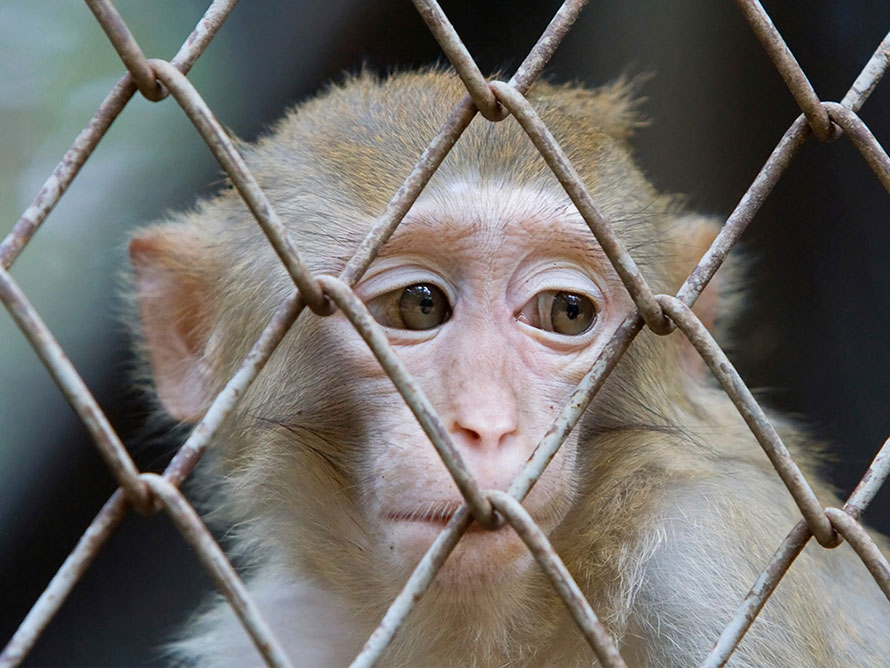
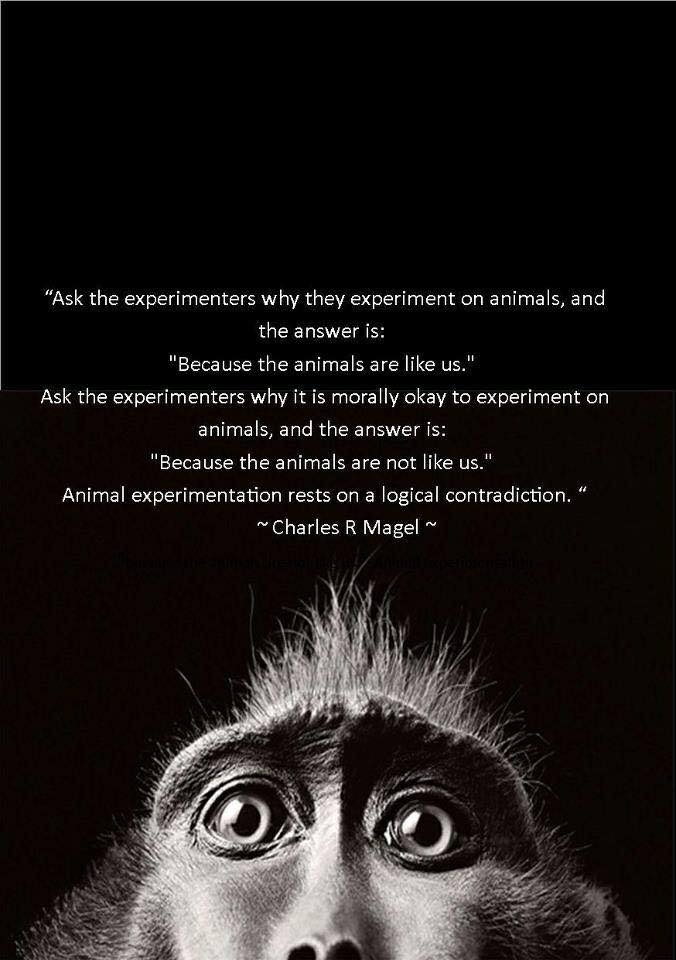
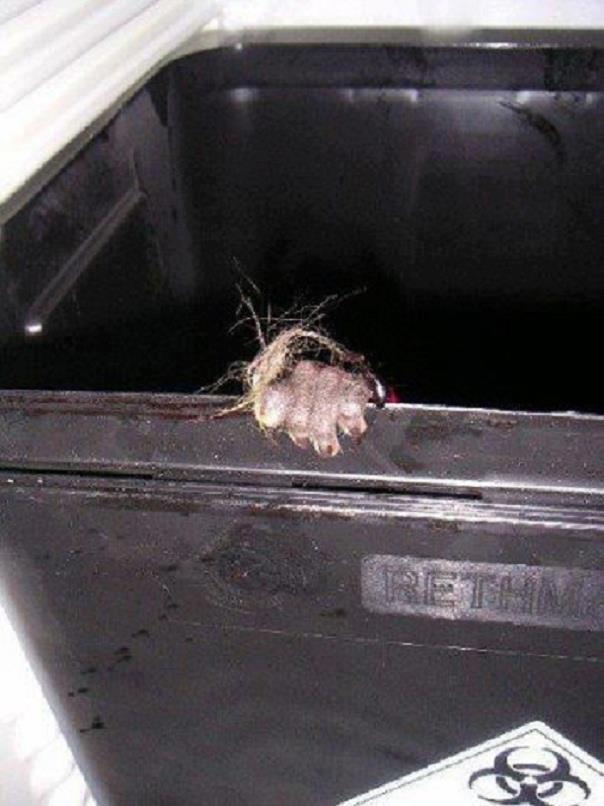
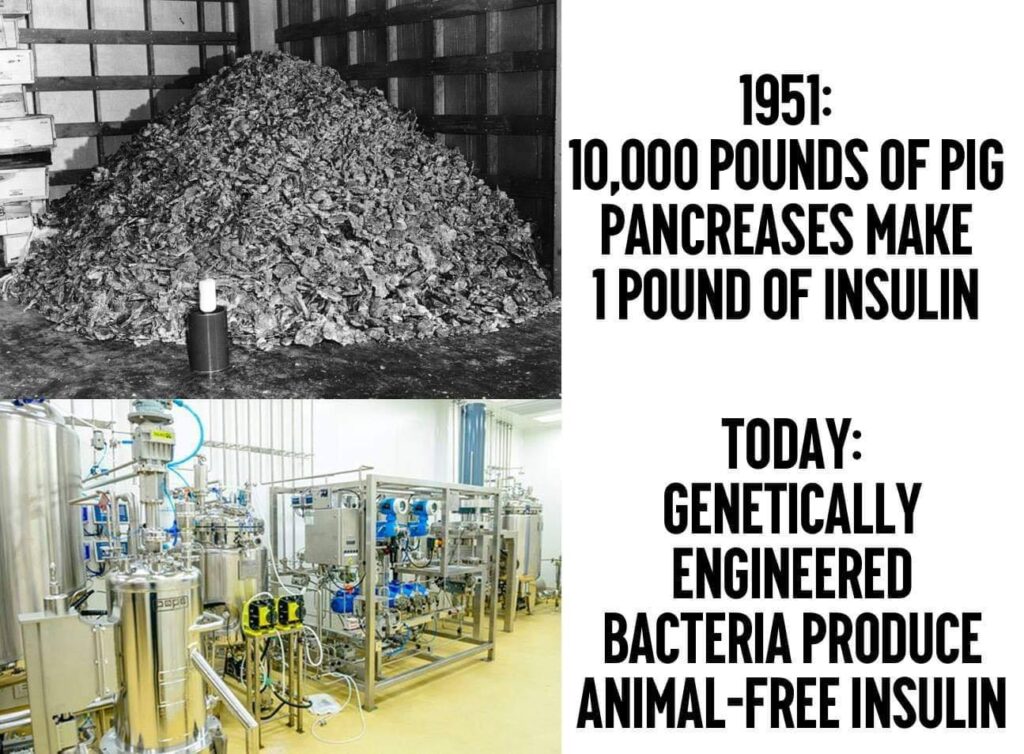
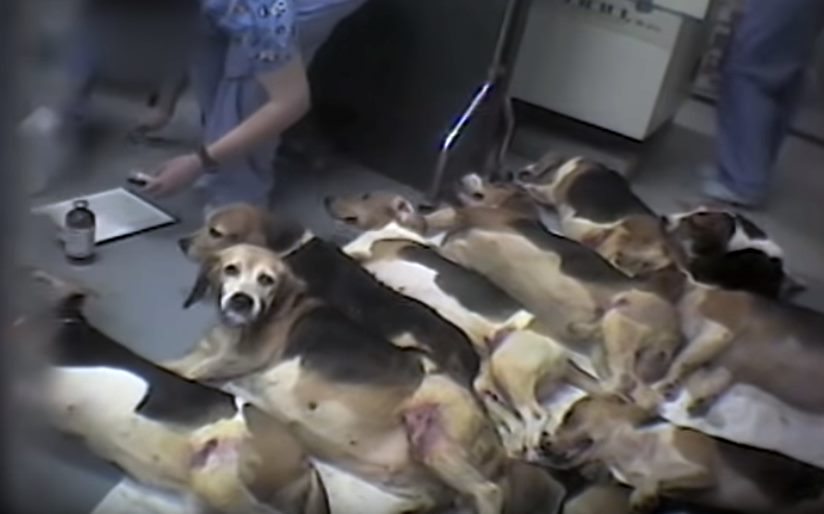
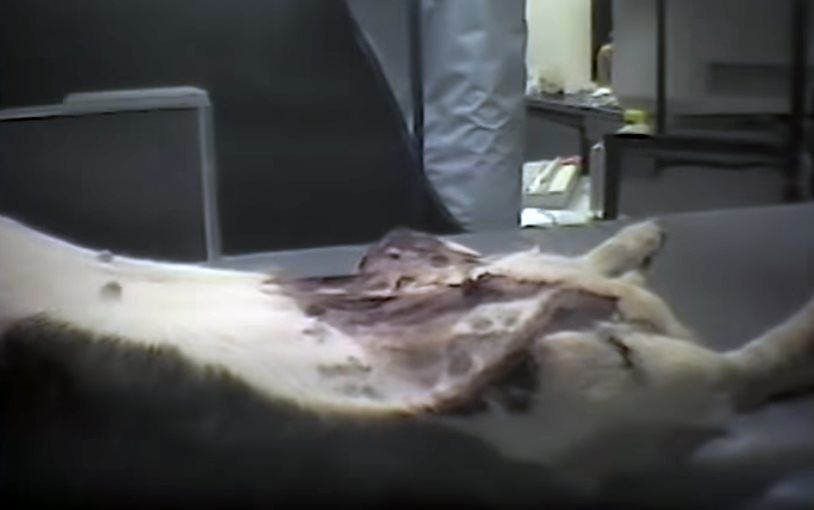
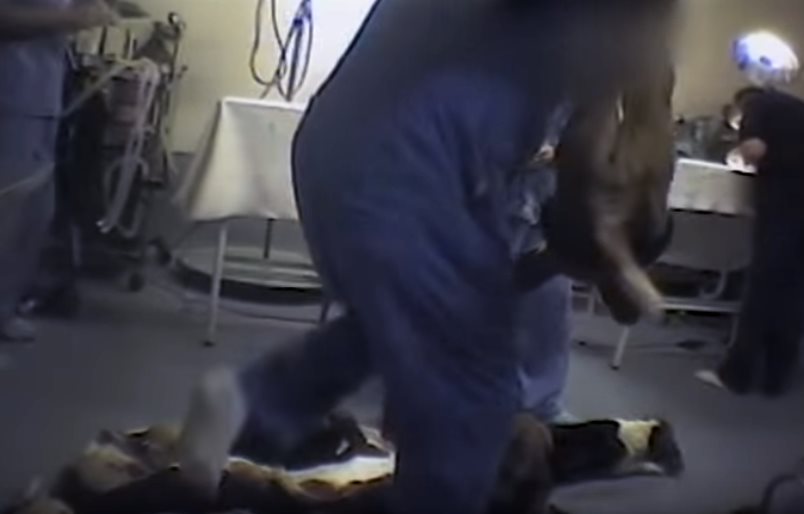
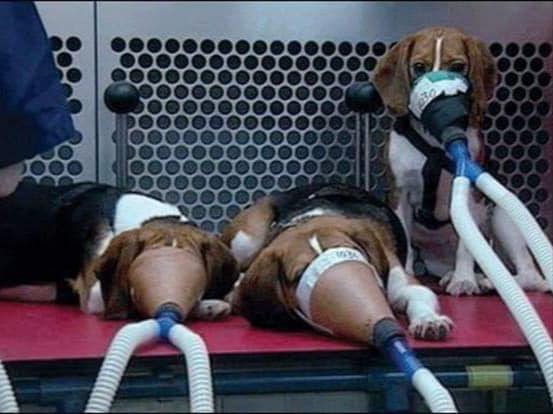
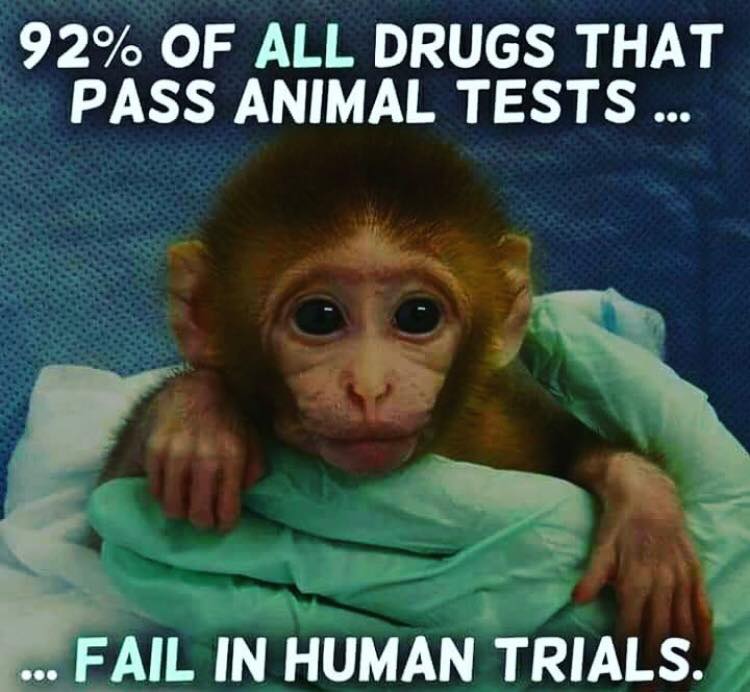
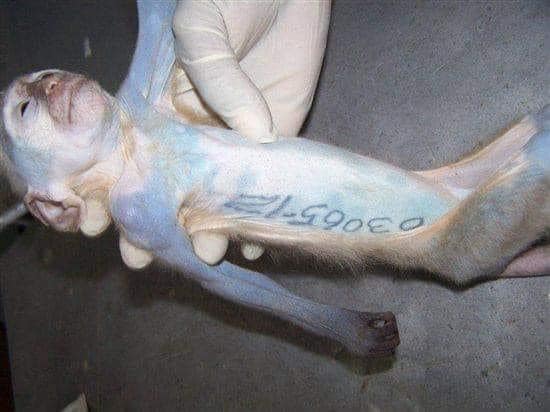
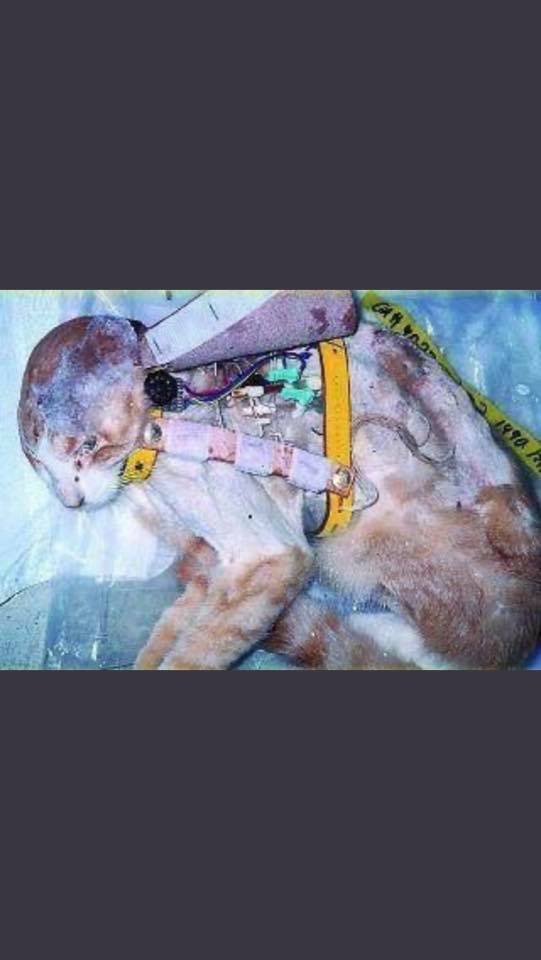
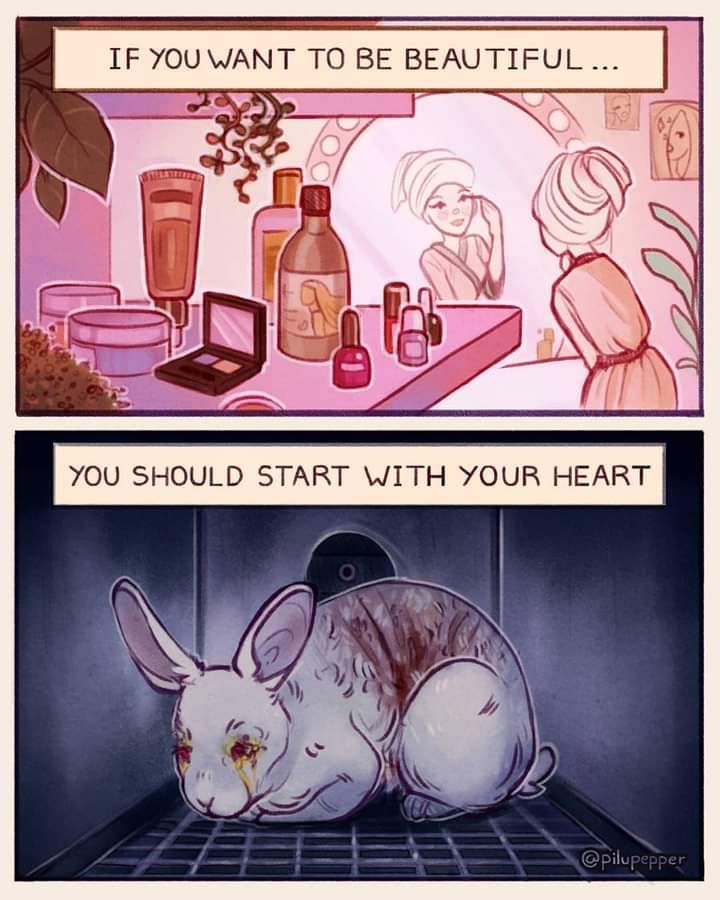
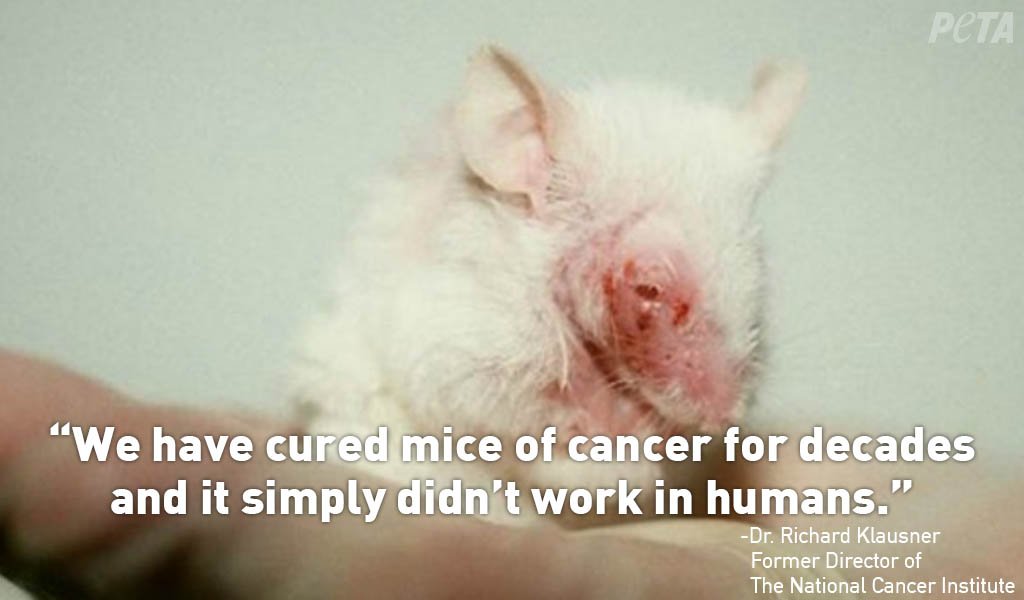
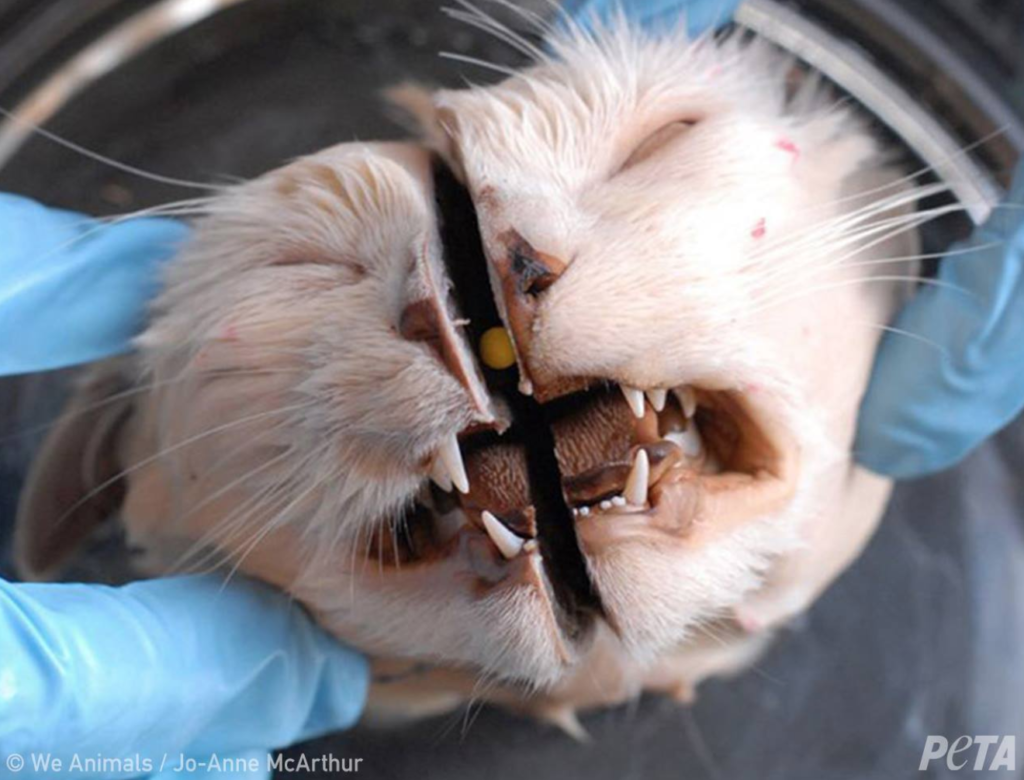
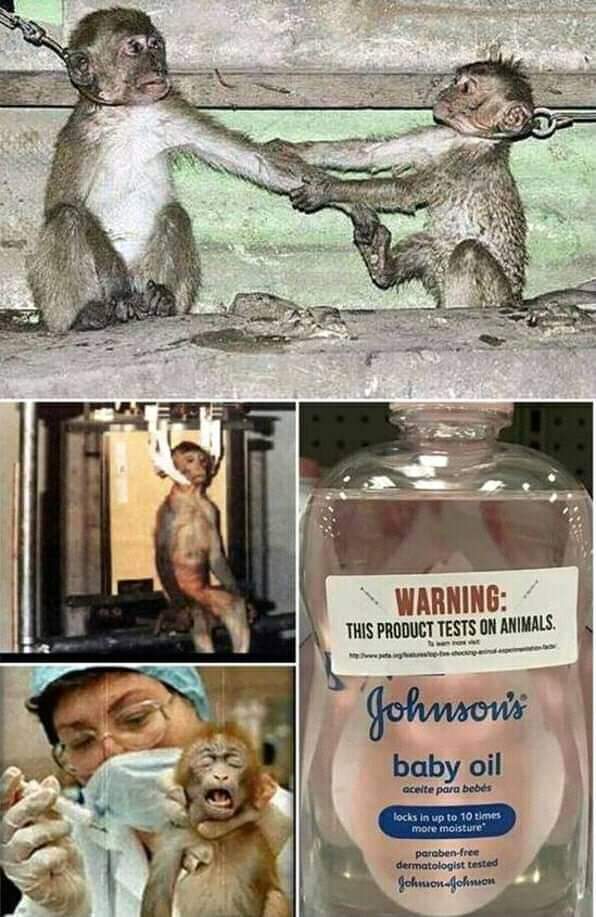
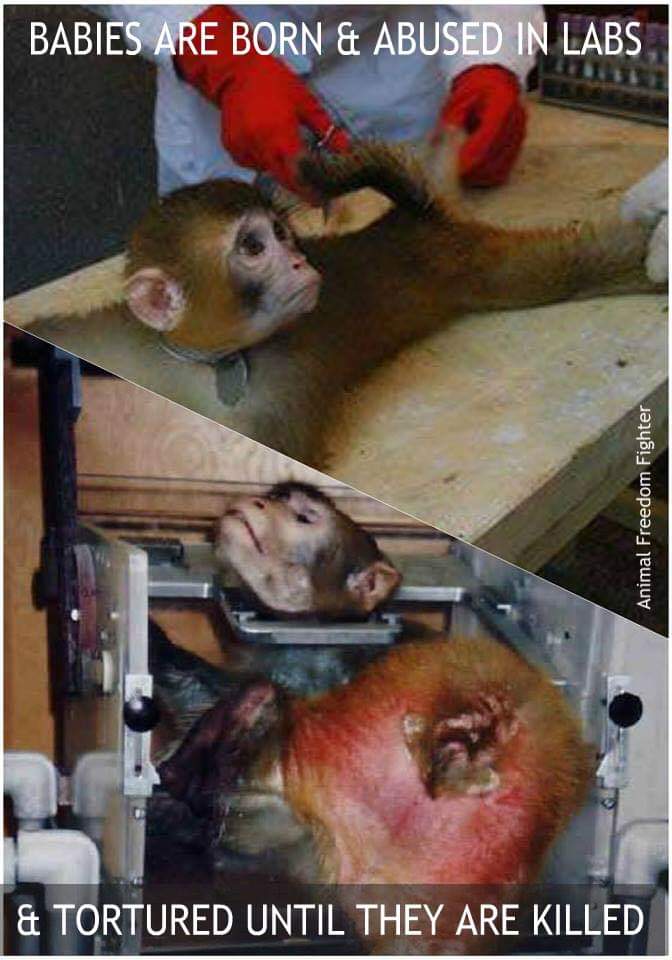
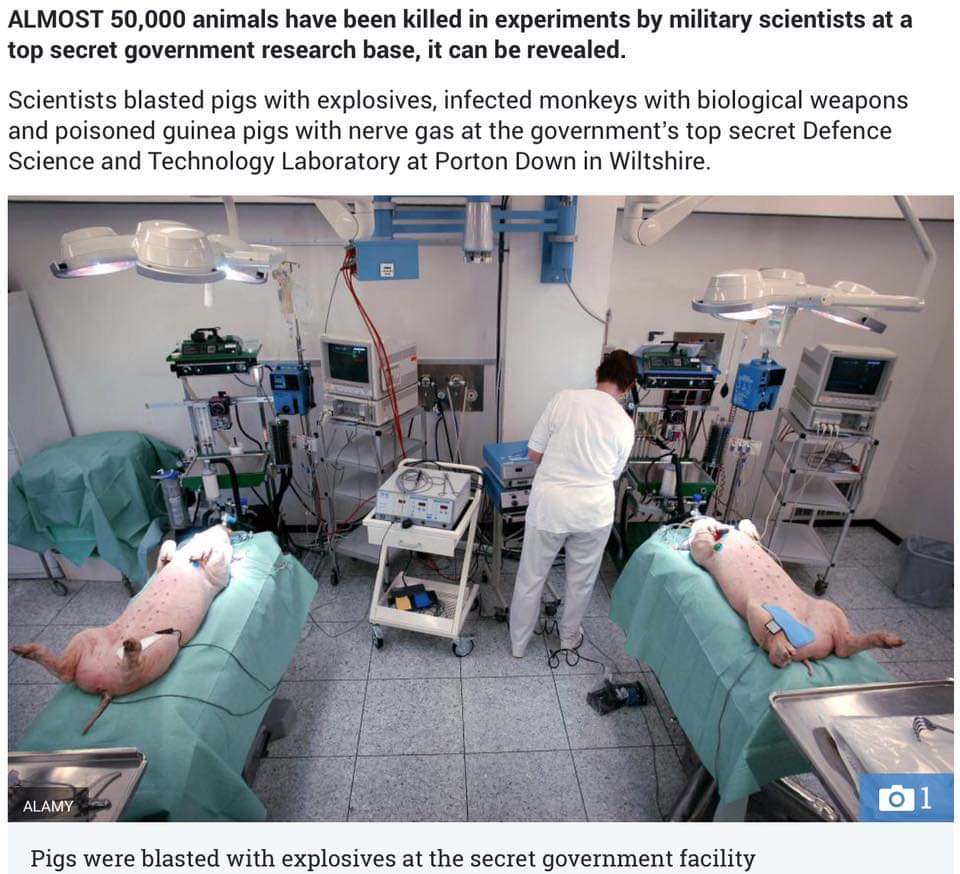
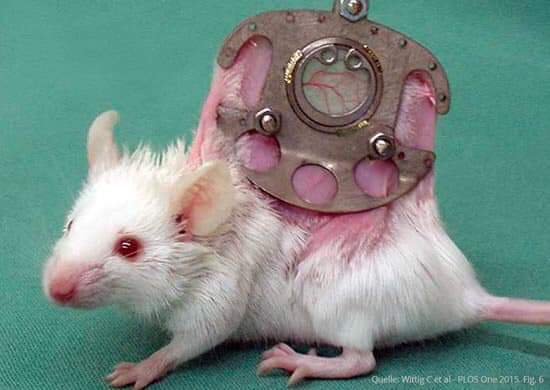
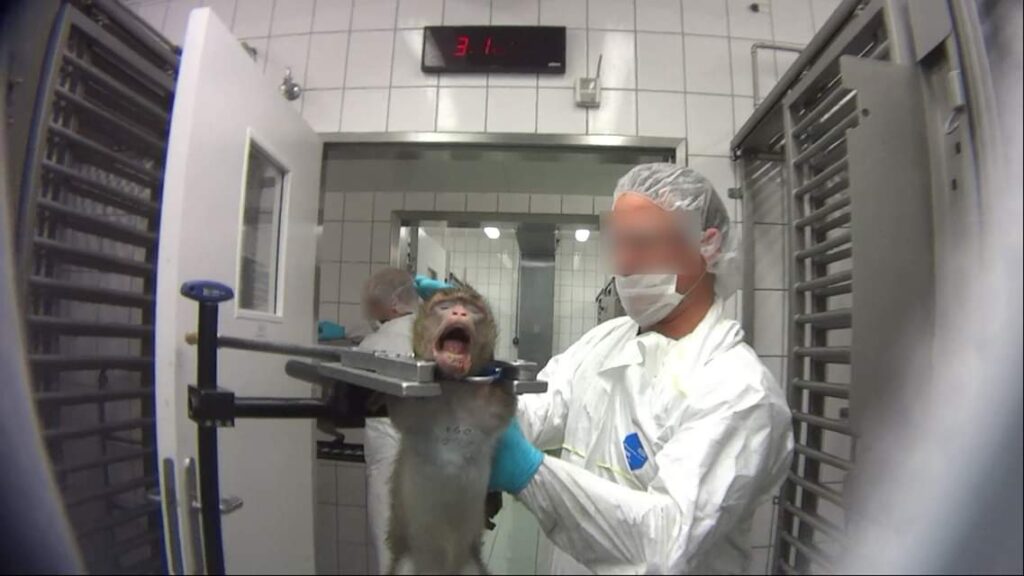

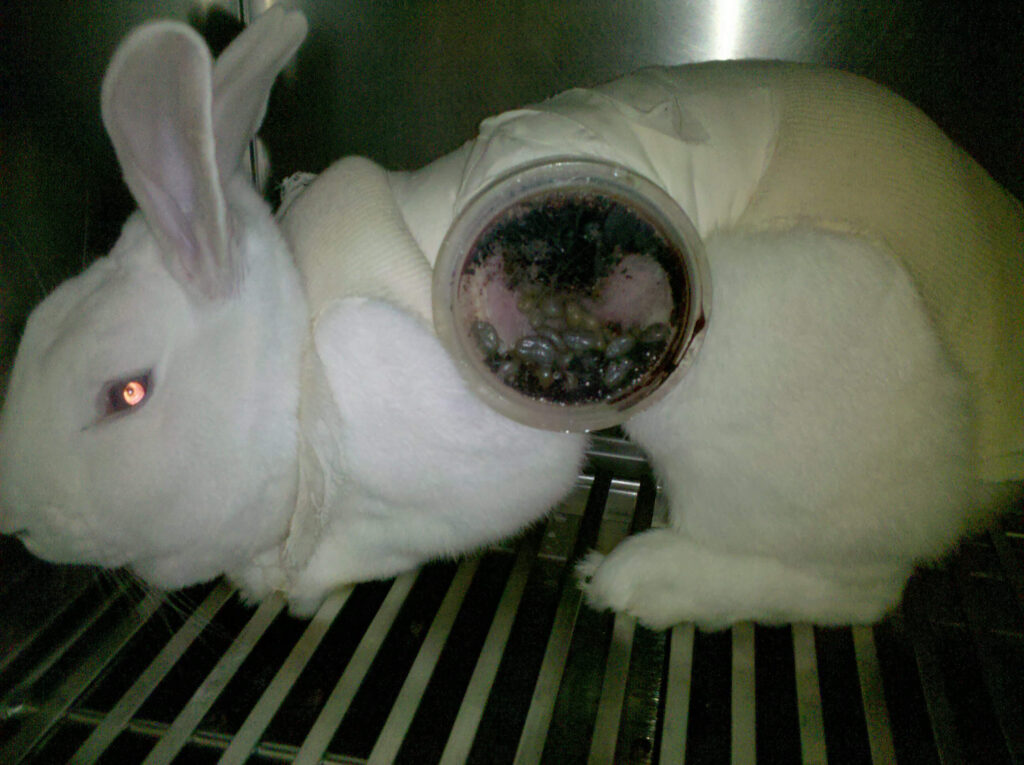
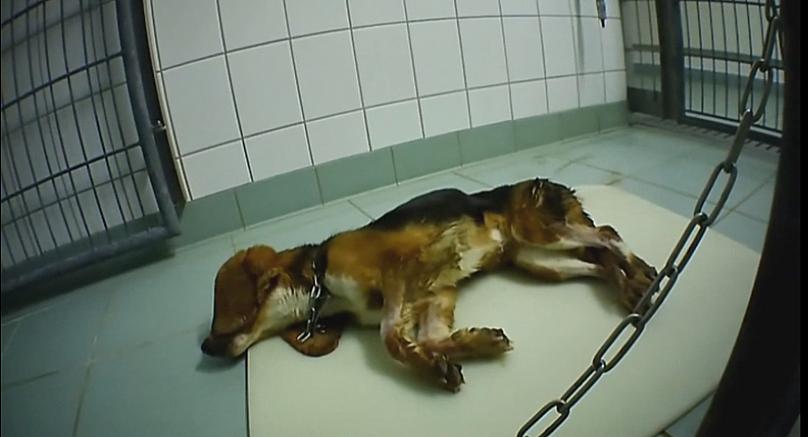
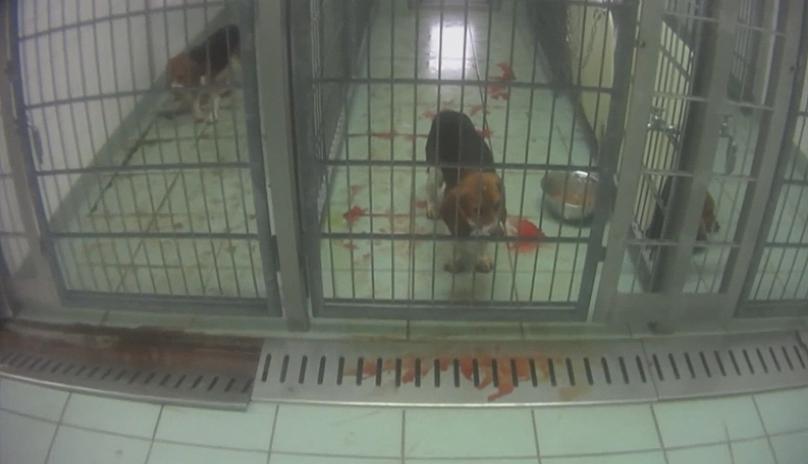
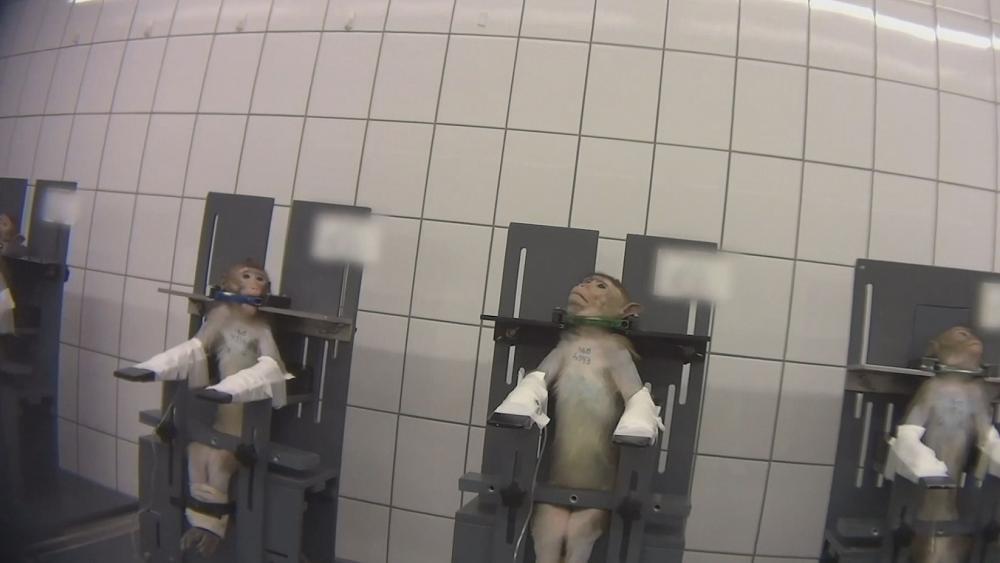
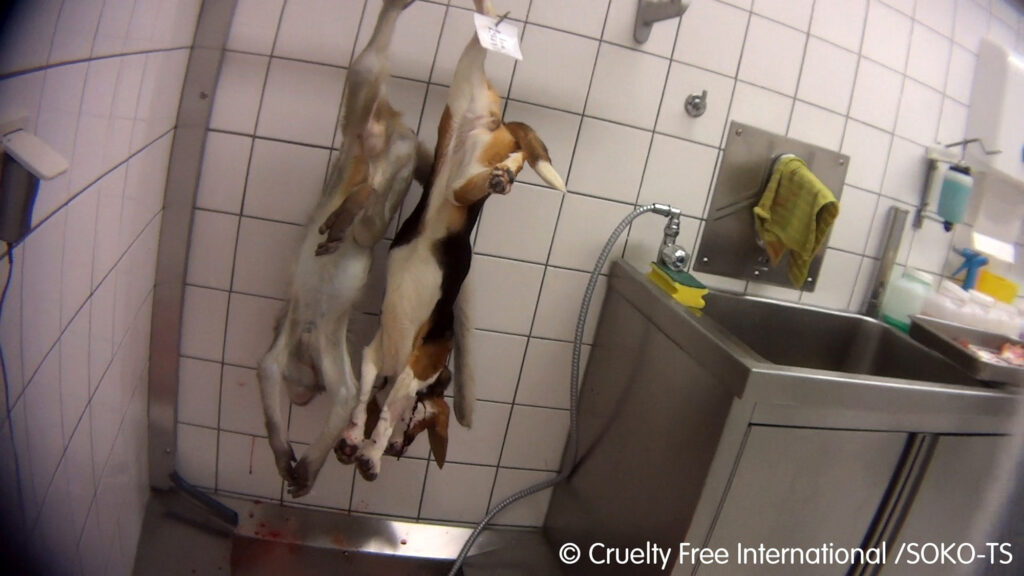
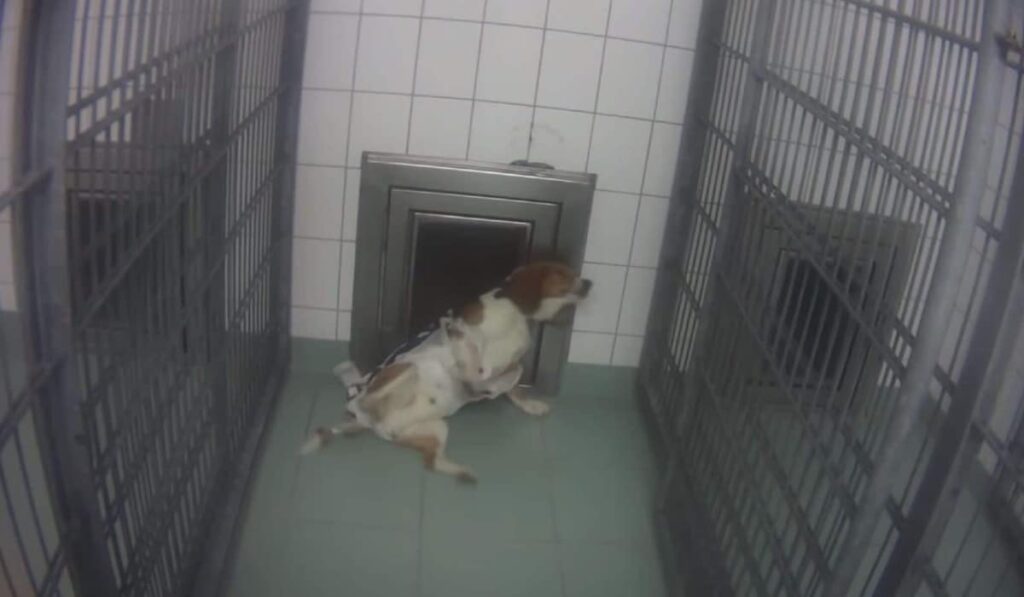
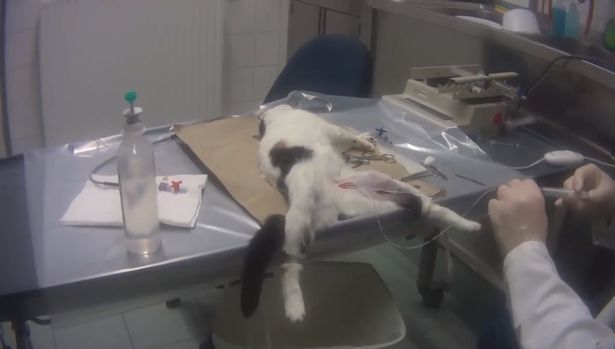
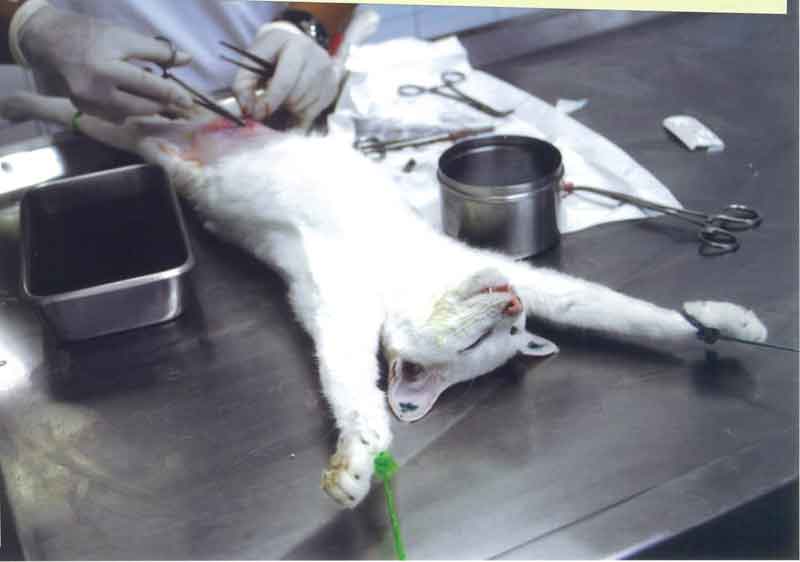
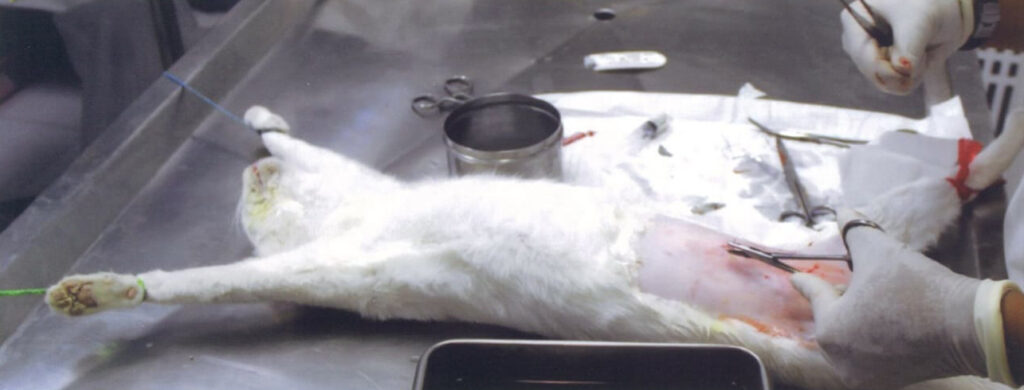
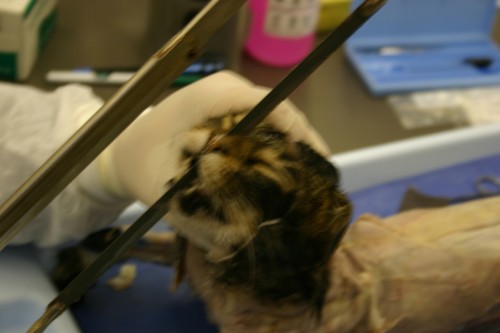
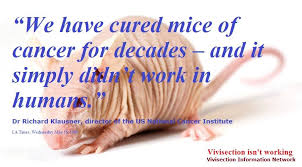
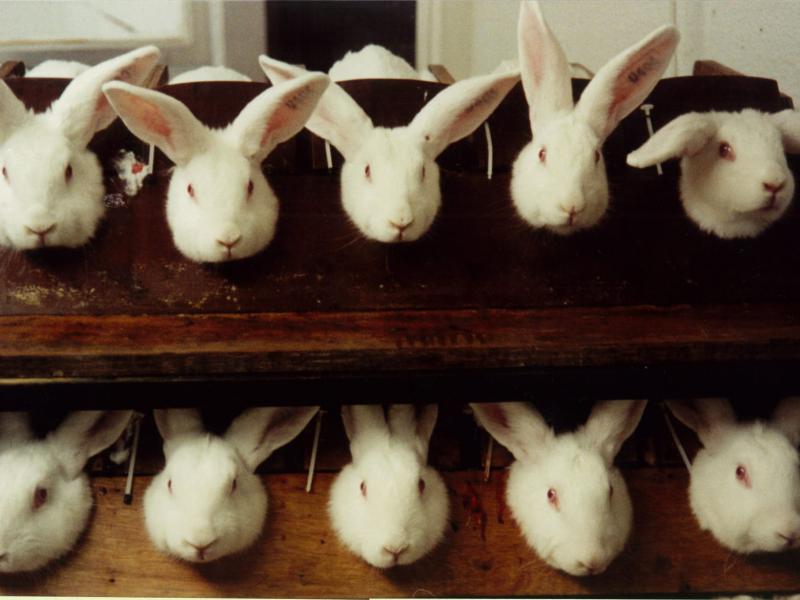
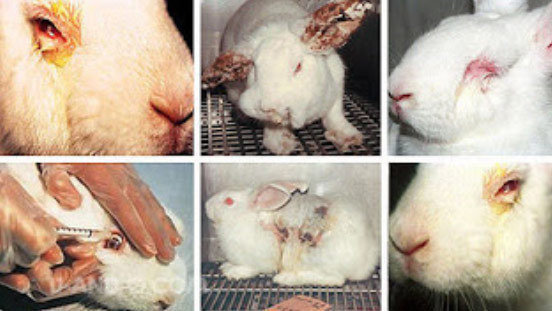
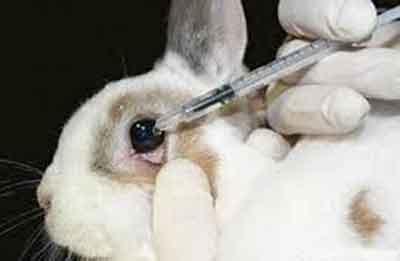
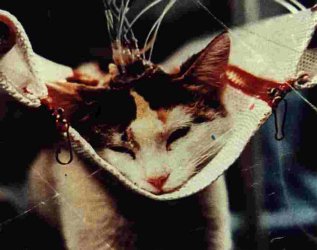
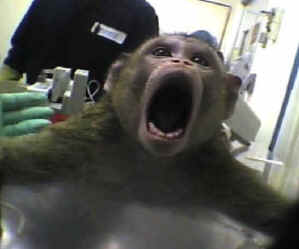
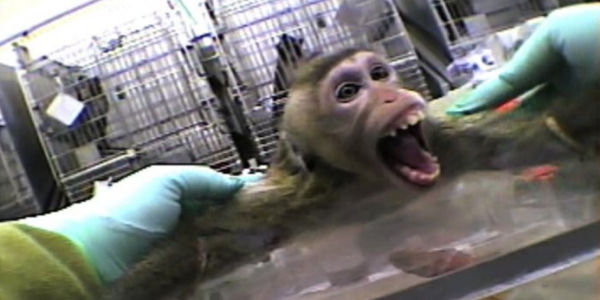
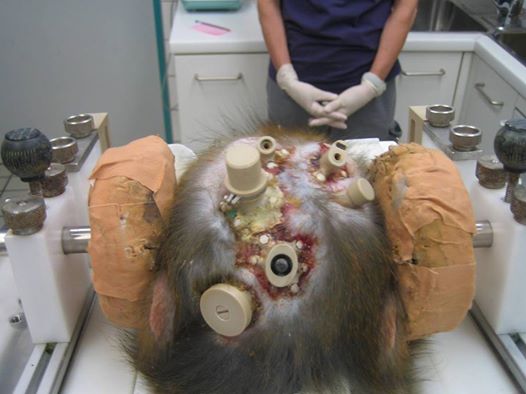
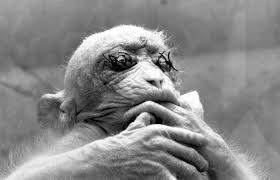
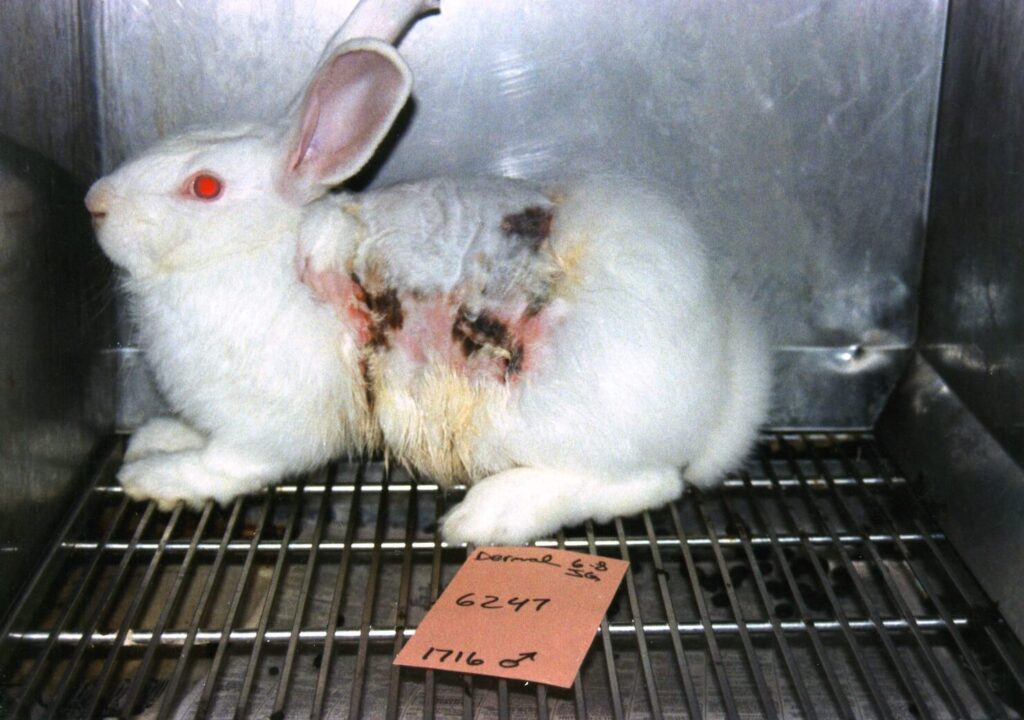
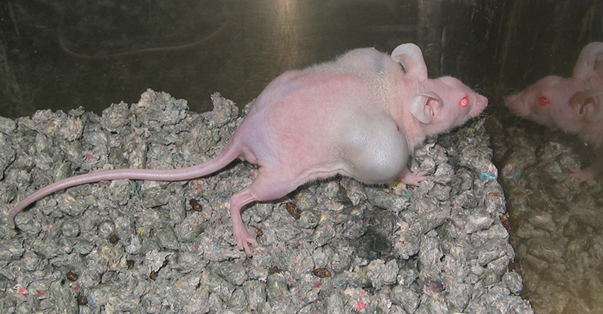
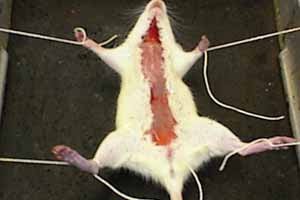

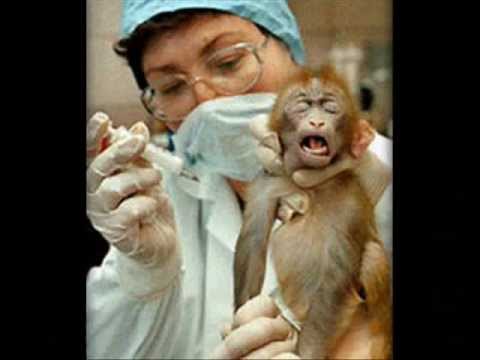


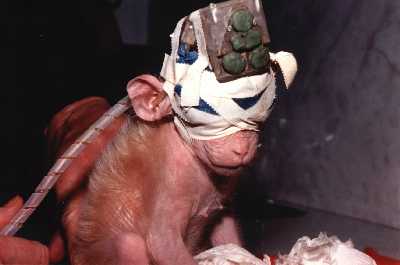
Physicians Committee for Responsible Medicine: http://www.pcrm.org/
National Anti-Vivisecting Society: https://www.navs.org/
Why We Still Test on Animals (video): [link]
Are There Alternatives to Animal Testing (video): [link]
How Animal Testing Harms Humans (video): [link]
Complete Guide to Vegan Cosmetics (video): [link]
Animal Testing (video): [link]
Baby Monkey Experiments (video): [link]
Primate Abuse for Experimentation (video): [link]
A Living Nightmare for Monkeys (video): [link]
Cruelty Free International Youtube Channel: https://www.youtube.com/channel/UC2HCdDvOVD-YTnsLL7D7nJA
Monkey Abuse (video): [link]
Experimenting on Animals (video): [link]
Human Undergoes Animal Testing (video): [link]
Animal Testing (video): [link]
Investigation in Germany Lab (video): [link]
Testing (video): [link]
Dog Labs (video): [link]
Animal Testing at Wrickham Labs (video): [link]
Testing on Baby Animals (video): [link]
Testing on Beagles (video): [link]
Beagles Step on Grass for First Time (video): [link]
Worse Labs in USA (video): [link]
Chimps Being Freed From Labs (video): [link]
University Testing (video): [link]
Montreal Lab Abuse (video): [link]
Replacing Animals (video): [link]
Dog Killed (video): [link]
Distress of Dogs in Lab: www.dailymail.co.uk/news/article-2571532/Video-shows-distress-puppies-kittens-waiting-dissected-animal-testing-laboratory.html
Animals in Research: http://www.neavs.org/research/harm-suffering
Cruelty and Waste of Vivisecting: http://www.navs.org/the-issues/the-cruelty-and-waste-of-vivisection/#.WTteNMa1tPY
The Truth About Vivisecting: http://www.vivisectioninfo.org/index.html
Vivisecting in America: http://www.animal-rights-library.com/texts-c/leffingwell01.htm
Animal Testing 101: https://www.peta.org/issues/animals-used-for-experimentation/animal-testing-101/
Animals Used for Experimentation: https://www.peta.org/issues/animals-used-for-experimentation/
What is Animal Testing: https://www.crueltyfreeinternational.org/why-we-do-it/what-animal-testing
Testing: http://aavs.org/animals-science/how-animals-are-used/testing/
About Animal Testing: http://www.hsi.org/campaigns/end_animal_testing/qa/about.html
11 Facts About Animal Testing: https://www.dosomething.org/us/facts/11-facts-about-animal-testing
Pros and Cons of Animal Testing: http://animal-testing.procon.org/
Animal Experimentation Issues: http://www.pcrm.org/research/animaltestalt/animaltesting
How Tech Can Spell End of Testing on Animals: https://www.theguardian.com/science/2014/aug/23/tech-end-animals-drugs-testing
Society for the Advancement of Animal Wellbeing – Vivisecting: https://www.saawinternational.org/animalexperimentation.htm
Of Human and Non-human animals: https://globalphilosophy.blogspot.com/2006/07/vivisection-opinion-polls.html
Veganism and Vivisecting: https://plantbasednews.org/opinion/vivisection-major-issue-vegans-make-more-noise/
Distressing Footage of Lab: https://www.euronews.com/2019/10/18/distressing-video-animal-cruelty-activist-films-undercover-at-german-testing-laboratory
Harrowing Cruelty at German Lab: https://www.thesun.ie/news/4660903/footage-shows-the-harrowing-treatment-of-monkeys-and-dogs-at-a-german-lab-which-uses-animals-for-experiments/ and https://extra.ie/2019/11/10/news/world-news/lpt-german-lab-animal-testing
Video of Monkeys Screaming as Dogs Bleed to Death: https://www.mirror.co.uk/news/world-news/new-video-shows-dogs-bleeding-20646017
Mice Not The Same as Humans: https://www.theguardian.com/science/2015/mar/20/mice-clinical-trials-human-disease
Animal for dissection filled with harmful chemicals: https://www.youtube.com/watch?v=p3rIc1qS258
Monkey Escapes Lab: https://www.theguardian.com/world/2015/jun/28/monkeys-freed-research-center-puerto-rico
End to Chimp Research: https://www.theguardian.com/us-news/2015/nov/19/national-institutes-health-end-chimpanzee-research
Taxpayer Money Used for Labs: https://www.theguardian.com/science/2016/jan/24/taxpayer-funds-reportedly-used-for-primate-experiments-in-sydney-labs
Cruelty Free International: https://www.crueltyfreeinternational.org/
Animal Testing: http://www.occupyforanimals.net/animal-experimentation–hidden-crimes.html
The Story of Britches: http://www.occupyforanimals.net/britches–the-story1.html
Animal Experimentation: http://www.occupyforanimals.net/animal-experimentation–vivisection.html
Inside Laboratories: http://www.occupyforanimals.net/inside-laboratories.html
Good Science Verses Bad Science: http://www.occupyforanimals.net/animal-experimentation—good-science-versus-bad-science.html
Doctors Against Vivisecting: http://www.occupyforanimals.net/1000-doctors-and-many-more-against-vivisection.html
Safer Medicines: http://www.occupyforanimals.net/animal-experiments—safer-medicines.html
Beagles Used in Testing: http://www.occupyforanimals.net/beagles-are-the-dog-breed-most-often-used-in-animal-testing-due-to-their-size-and-passive-nature.html
Indian Government Bans Testing on Live Animals: http://www.occupyforanimals.net/india-government-bans-use-of-live-animals-for-education-and-research.html
Make Vivisecting History: http://occupyforanimals.wixsite.com/vivisection
The End of Medical Research on Chimps: http://www.occupyforanimals.net/nih-decision-signals-the-beginning-of-the-end-for-medical-research-on-chimps.html
Failure of the Animal Model: http://www.navs.org/the-issues/failure-of-the-animal-model/#.WT386sa1tPY
Top 3 Ways Animal Experiments Hurt Humans: http://www.huffingtonpost.com/aysha-akhtar/animal-experiments_b_4209541.html
The Flaws and Human Harms of Animal Experimentation: https://www.ncbi.nlm.nih.gov/pmc/articles/PMC4594046/
Limitations and Dangers: http://www.neavs.org/research/limitations
Drugs That Work on Mice Often Fail in Humans: http://www.npr.org/sections/health-shots/2017/04/10/522775456/drugs-that-work-in-mice-often-fail-when-tried-in-people
Dangerous Medicine: http://www.pcrm.org/research/animaltestalt/animaltesting/dangerous-medicine-examples-of-animal-based-tests
Animal Testing is Bad Science: https://www.peta.org/issues/animals-used-for-experimentation/animal-testing-bad-science/
Examples of Drugs That Failed in Humans [PDF Download]: lushprize.org/wp-content/uploads/Lush-Prize-animal-testing-failures-2015.pdf
Animals Used in Education: https://www.peta.org/issues/animals-used-for-experimentation/classroom-dissection/
Dissections: https://www.peta.org/issues/animals-used-for-experimentation/animals-used-experimentation-factsheets/dissection-lessons-cruelty/
How Dissections Harm Animals and Planet: http://www.onegreenplanet.org/animalsandnature/dissection-cruel-or-educational/
Dissections Kill: http://features.peta2.com/dissection-kills/
Classroom Dissections: http://www.petakids.com/save-animals/dissection-guide/
Dissections: http://www.lcanimal.org/index.php/campaigns/other-issues/dissection
Dissection: http://animal-lib.org.au/campaigns/animals-for-science/dissection-in-schools
Dissection: http://www.veganpeace.com/animal_cruelty/dissection.htm
Animals Used in Education: http://www.navs.org/what-we-do/keep-you-informed/science-corner/areas-of-science-that-use-animals/animals-in-education/#.WT3-j8a1tPY
Dissections and Vivisecting: http://www.animalearn.org/dissection.php#.WT3-kca1tPY
Should Schools Cut Dissections: http://www.all-creatures.org/articles/ar-should.html
Dissection and Dissent [PDF Download]: www.hsvma.org/assets/pdfs/dissection-and-dissent.pdf
In Testing Alternatives: http://www.neavs.org/alternatives/in-testing
Alternatives to Animal Testing: https://www.peta.org/issues/animals-used-for-experimentation/alternatives-animal-testing/
Alternatives: https://www.crueltyfreeinternational.org/why-we-do-it/alternatives-animal-testing
Alternatives to Animal Tests: http://www.humanesociety.org/issues/cosmetic_testing/facts/alternatives_animal_tests.html
Alternatives: http://animalresearch.thehastingscenter.org/facts-sheets/alternatives-to-animals/
List of Companies That DON’T Test on Animals: https://veganrabbit.com/list-of-companies-that-do-not-test-on-animals/
Ultimate cruelty Free Makeup Guide: https://www.crueltyfreekitty.com/ultimate-guide-to-cruelty-free-makeup/
Experimenting on Animals (video): [link]
Humans Experimented on as Non-Human Animals Are: (video) [link]
Monkey Tests: [link]
Animals Experimented on for Tick Medication: [link]
Mouse Abuse: [link]
Cat Cruelly Killed: [link]
A New Tool Could Help Us Finally Eliminate Animal Testing
‘Experiment’ dogs are left dying with open cuts ‘ at university
Virtual Lab Rats Could Replace Living Animals in Early Drug Testing
Ever wonder why dogs are so often used in experiments? The answer will haunt you
Non-animal testing lab opens in China
Reminder: Animal Testing is Pointless | peta2
Medical Testing on Chimps Ends After 100 Years of Experiments | LIVEKINDLY
Sephora Launch Vegan Beauty Range With a Heart Warming Story | LIVEKINDLY
Brave And Tragic: A Story Of Being One Of The Mengele Twins In…
It’s 2017. How are animals STILL being tortured in labs?
Ga Maleven